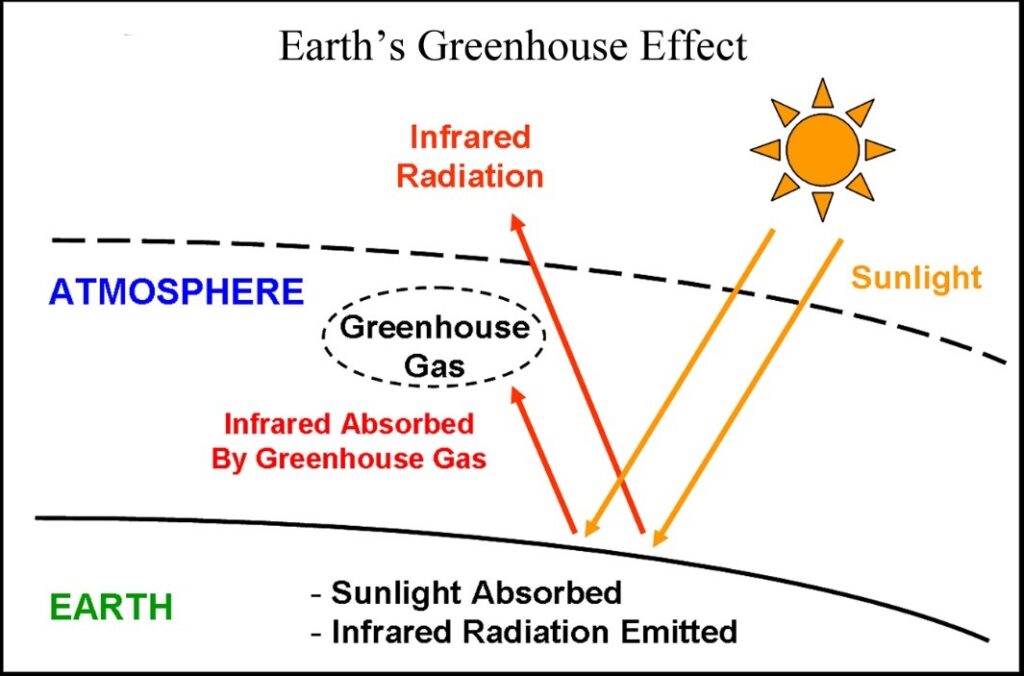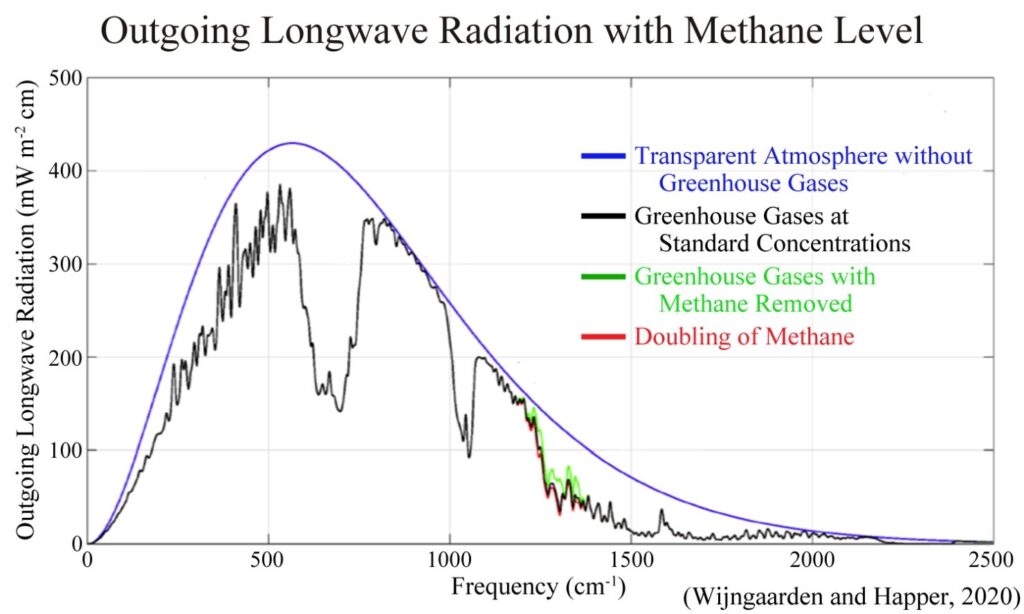New US-EU Methane Rules Won’t Affect Temperatures
By Steve Goreham -- July 9, 2024“Because of greenhouse gas saturation in the atmosphere, methane regulations across the world will have no measurable effect on global temperatures.”
In March, the U.S. Environmental Protection Agency (EPA) published new methane emissions regulations for the oil and gas industry. The European Union enacted new rules to reduce methane emissions from the energy sector in May. Agriculture is also being targeted regarding methane.
But methane regulations, even if established worldwide, won’t have a measurable effect on global temperatures. However, they will raise costs for energy and food, impacting consumers and businesses.
On March 8, EPA finalized its rule on methane emissions for the oil and gas sector. The rule is intended to “reduce wasteful methane emissions that endanger communities and fuel the climate crisis.” The new policy will require companies to pay a penalty of $900 for every ton of methane emitted above limits set by the EPA, starting this year. A legal challenge to the EPA’s new rule has been filed by 24 states.
On May 27, the European Union (EU) announced new regulations on methane emissions from coal, gas, and oil operations. These rules will require energy firms to monitor and report methane emissions and to reduce methane flaring from operations. The rules also apply to international firms that ship hydrocarbon fuels to Europe.
Background
Methane (CH4) is also called natural gas. It is emitted from oil and gas operations from flaring or system leaks. CH4 is also produced through the decay of organic material, such as from municipal solid waste landfills. The EPA and the EU have proposed methane regulations to try to fight global warming.
But nature and human agriculture are larger sources of methane than the energy industry. Termites and other insects emit large amounts of methane. We have about 1.5 billion cows on Earth, and numerous other livestock and wildlife, emitting methane from both the nose end and the tail end.
Methane is a greenhouse gas and part of Earth’s greenhouse effect, which is blamed for global warming. Sunlight, which is high-energy radiation, enters the atmosphere and is absorbed by Earth’s surface. Like any warm body, Earth emits radiation. Since Earth’s temperature is lower than that of the sun, Earth emits lower-energy radiation called infrared radiation or longwave radiation, which is not visible to our eyes.

Figure 1.
This longwave radiation seeks to leave Earth’s atmosphere, but almost all of it is absorbed by greenhouse gases in the atmosphere. These gases then re-radiate the absorbed energy, which acts to warm Earth’s surface. The warming caused by the absorption of infrared radiation is called the greenhouse effect. Emissions from human industrial processes add to the effect and increase global temperatures.
But Earth’s greenhouse effect is overwhelmingly a natural effect. Water vapor, not carbon dioxide or methane, is Earth’s dominant greenhouse gas. Water vapor accounts for 70 to 90 percent of the greenhouse effect.
Carbon dioxide (CO2) is the next most important greenhouse gas, but most of the CO2 in the atmosphere comes from nature, such as CO2 emissions from the oceans and the biosphere. Every day, nature puts 20 times as much carbon dioxide into the atmosphere as all human emissions and removes about the same amount. Methane ranks only as a distant third as a greenhouse gas.
Overhyped Contribution
The European Union states:
… methane’s ability to trap heat in the atmosphere is even stronger than that of carbon dioxide. On a 100-year timescale, methane has 28 times greater global warming potential than carbon dioxide and is 84 times more potent on a 20-year timescale.
These widely reported assertions from the EU and other sources are incorrect. Claims about the global warming potential of methane are accurate in the laboratory, but not in the atmosphere.
No one paints a room in their house ten times, because after two coats of paint, no difference is observed. Similarly, greenhouse gases are already saturated in Earth’s atmosphere at the frequencies at which methane absorbs outgoing longwave radiation. Additional methane will have almost no effect.
A 2020 analysis by Wijngaarden and Happer looked at the absorption of outgoing longwave radiation by methane and other greenhouse gases across the radiation spectrum. The researchers found that doubling atmospheric methane, from either natural or human causes, would increase greenhouse gas absorption by only about 0.3 percent, a negligible amount.

Figure 2.
Farming has become a target for efforts to reduce methane emissions. Earlier this year, New York Attorney General Letitia James sued JBS, the world’s largest beef producer, over the firm’s methane emissions and for allegedly making misleading sustainability statements to the public. The costs of this litigation will add to food price inflation for consumers.
Earlier this year, the EU sought to impose the Sustainable Use Regulation (SUR) on European farmers. Ursula von der Leyen, President of the European Commission, stated that the agricultural sector needed to transition towards a “more sustainable model of production.” Farmers were asked to reduce the size of dairy herds and to limit the use of nitrogen fertilizer to reduce greenhouse gas emissions of methane and nitrous oxide. Germany’s Federal Agricultural Minister, Cem Özdemir, even proposed a consumption tax on meat.
But angry farmers launched intense protests in France, Germany, Italy, Netherlands, Spain, and other nations. Hundreds of tractors blocked traffic in major cities and police were pelted with eggs and liquid manure. The SUR was defeated, and the EU backed away from additional agricultural regulations, including regulations on methane and the use of nitrogen fertilizer.
Possibly the most bizarre law to reduce emissions was the Australia Carbon Farming Initiative Act of 2011, which awarded carbon credits for killing feral (wild) animals, including:
… the reduction of methane emissions through the management, in a humane manner, of feral goats, feral dear, feral pigs or feral camels.
Killing of animals for carbon credits was halted in 2012.
Conclusion
Greenhouse gas saturation in the atmosphere means that methane regulations across the world will have no measurable effect on global temperatures. But to the extent that they are enacted, these rules will raise the costs of energy and food production and prices to consumers and businesses.
———————-
Steve Goreham is a speaker on energy, the environment, and public policy and the author of the new bestselling book Green Breakdown: The Coming Renewable Energy Failure. His previous posts at MasterResource can be viewed here.
You forget possibly the most important point of all which is that nuclear power is the only non-CO2 producing tech. That could supply the needs of the future. The ruling powers are ruthlessly dismantling nuclear plants and refusing to develope the even more promising liquid fluoride thorium reactors which can recycle almost all fuel, no water needed, don’t need high pressure containment, have no chance of meltdown, produces NO PLUTONIUM, and would need much less mining.
Richard: The irony is that wind and solar with such low incremental costs have prematurely retired nuclear capacity that cannot compete.
For new capacity, nuclear is simply an uncompetitive technology, even with government subsidies coming and going.